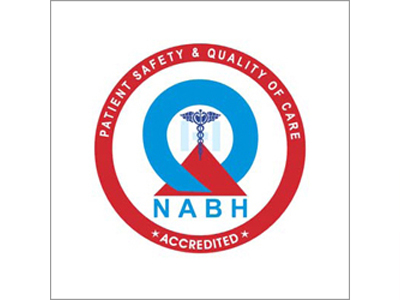The macula is a small region in the middle of the retina that is rich in photoreceptors. Light entering our eyes is focused on the center of the macula, forming a sharp image of what we see. Macular holes—usually a few hundred microns in radius—can cause blurred or distorted vision and, if left untreated, can lead to blindness. The usual treatment for macular holes involves surgery, after which the hole is kept closed using a gas tamponade—a bubble of gas injected into the eye that acts like a band-aid. Gas tamponades require the patient to remain in a face-down position for 1–2 weeks which can be uncomfortable for the patient and can lead to musculoskeletal and ocular complications.
Dr. Mudit Tyagi, a clinician-scientist and head of the Smt. Kanuri Santhamma Centre for Vitreo-Retinal Diseases at LVPEI, discusses his latest research paper, which describes a new method of closing macular holes after surgery using fibrin-glue, a biological adhesive.
What are your areas of medical practice and research interests? What got you interested in retinal surgery?
My primary area of focus is retinal surgery, including complex retinal detachments and endoscopic retinal surgeries. I look at means to improve upon current surgical practices in the field. I have also dealt with retinal infections and posterior uveitis, where the choroid (blood vessels between the retina and sclera) gets inflamed.
My interest in the retina started in my second year of residency. There are a lot of ocular diseases that primarily manifest in the retina, and I was quite intrigued by how the disease affects the eye and evolves. I knew I wanted to study these diseases and that is why I came to LVPEI.
What are macular holes and the risk factors that trigger them in the elderly?
Macular holes are tears in the central retina. Tangential traction in the internal limiting membrane (ILM), a layer within the retina, pulls the retina in opposite directions that leads to the formation of a hole in the central retina. Treatment involves ILM peeling, a surgical procedure that removes the ILM and along with it the tangential forces that are pulling the retina apart. The hole is then closed using a gas tamponade or like in this paper’s instance, using fibrin glue.
Macular holes are predominantly seen in the elderly but can also result from ocular trauma. There are no definitive risk factors as such that can be addressed to prevent macular holes. The only thing that can protect vision are regular, comprehensive eye examinations. Macular holes detected at an early stage have a much better prognosis than holes that had time to enlarge due to neglect.
How did this project start? What were some of the questions that drove you into this research?
Previously, our team had explored the efficacy of fibrin glue in retinal detachments. Retinal reattachment was successful in all five patients and their visual acuity improved in a month. So, the big question was if we could apply fibrin glue in macular hole surgery as well.
Why is it necessary for a patient to maintain a prone position after eye surgery involving a gas tamponade? What complications can arise from not doing so?
An intraocular gas bubble needs to stay affixed to the retinal tissue to act as a tamponade. Because of the pull exerted by the bubble's natural surface tension, the retinal tissue around the hole is pushed together. The gas bubble forms a seal around the macular hole and stops vitreous from seeping into it. The bubble also acts as a scaffolding, allowing the tissue to regenerate.
But the gas bubble is also lighter than air and so it tends to float up and away from the hole. Maintaining a prone posture keeps the bubble attached and in place. Not maintaining a prone posture can displace the gas bubble and cause the macular hole to reopen.
How does fibrin glue compare to gas tamponades when it comes to patient outcomes and quality of life?
Old age, spinal problems, obesity, and other conditions often prevent patients from remaining in a prone position for 3–5 days. We have presented an alternative to gas tamponades that can accomplish all its tasks without requiring the patient to be prone while recovering from macular hole surgery.
Moreover, using fibrin glue eliminates side effects associated with a gas tamponade. For example, if a gas bubble expands it can cause increased intraocular pressure that may manifest as secondary glaucoma. A gas tamponade also restricts you from air travel due to difficulties arising from changes in atmospheric pressure during flight. Fibrin glue does not cause that problem. Lastly, an intraocular gas bubble prevents you from seeing clearly for 2–4 weeks. Fibrin glue gets absorbed within 7 days, allowing you to see clearly. However, the study’s sample size is too small to replace fibrin glue in all macular hole cases today.
Were there any challenges when using fibrin glue over gas tamponade?
The only challenge was how to deliver the fibrin glue carefully and in a limited amount. A surgeon needs to ensure a controlled delivery because too much fibrin can cause tissue inflammation.
What makes fibrin glue so effective in the ocular context?
Fibrin is a protein component of the blood coagulation cascade. What makes fibrin so good is that it is non-toxic, and it gets absorbed by ocular tissues within a week. Cornea specialists at LVPEI have used fibrin for ocular surface applications. It has also shown promise for non-ophthalmological applications, like neurosurgery, where it is used to seal small blood vessels and prevent leaks.
What other applications for fibrin glue can you see for ocular surgeries?
We are looking into the idea of using fibrin glue as a drug delivery system. A challenge with sub-retinal drug delivery is that the drug tends to leak out of the tissue. Our hypothesis is that fibrin glue may be able to contain the drug within the target tissue. The theory is that the drug will remain localized for at least 7 days since fibrin takes a week to absorb.
LVPEI is also working with a team from the University of Rochester to assess the survivability of stem cells in fibrin glue and if the glue can serve as an effective stem cell delivery system.
Dr. Mudit Tyagi spoke to Sayantan Mitra, Science Writer, LVPEI. Read more about his research here.
Citation
Tyagi M, Reddy NG, Sahoo NK. Fibrin-Glue-Assisted Surgery for Idiopathic Macular Holes. Semin Ophthalmol. 2023 Oct 21:1-4



